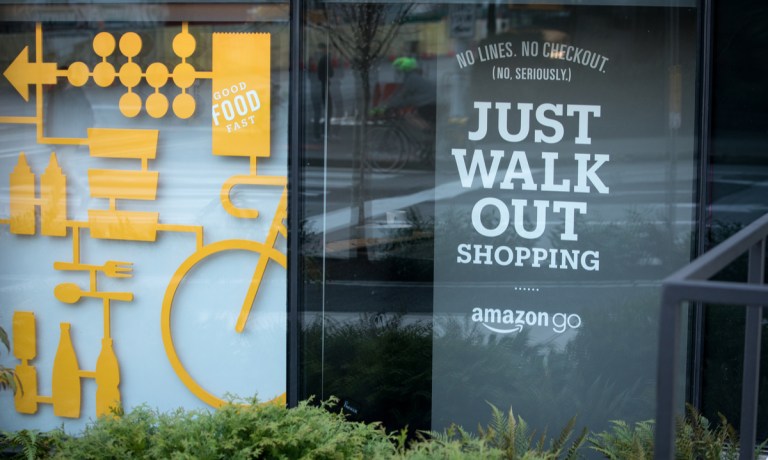
In an effort to remove friction from alcohol purchases at Just Walk Out locations, and in turn to boost adoption and customer frequency, Amazon is integrating age verification into its Amazon One palm payment technology.
The eCommerce giant announced Monday that it is rolling out a capability whereby consumers enrolled in Amazon One can upload photos of their ID, so that when they purchase alcohol from stores where the technology is available, they will not need to show physical ID.
“Customers love the convenience of paying with their palm; however, when it comes to purchasing alcohol, friction is reintroduced as customers must produce a government-issued ID for age verification,” Dilip Kumar, Amazon’s vice president of AWS applications, wrote in a company blog post. “We’re solving that customer pain point and improving the guest experience with the launch of a new capability called ‘age verification.’”
The first deployment of the technology is at Denver’s Coors Field baseball stadium, where bartenders will see, when enrolled consumers pay with their palm, that a given customer has been preverified as “21+.”
The technology could be key to Amazon’s efforts to license out its Amazon One technology to non-Amazon-owned venues and retailers, making the payment option more appealing to bars, restaurants that serve alcohol, liquor stores and other outlets that require age-verification.
Certainly, payment systems that reduce friction from the purchasing process are in high demand among a wide range of retailers. Research from PYMNTS’ study “Big Retail’s Innovation Mandate: Convenience and Personalization,” created in collaboration with ACI Worldwide, which draws from a survey of 300 U.S. and U.K. retailers, found that merchants see payment and checkout technology as key to maintaining shopper loyalty.
More than three-quarters reported believing that consumers would be very or extremely likely to switch merchants if alternative in-store payment methods were not provided, and 51% said the same of self-service kiosks. This survey included merchants ranging from general retailers to grocers to convenience stores and pharmacies to automotive merchants.
Yet it may be a long time before frictionless checkout is the norm. In an interview earlier this year with PYMNTS, Jordan Fisher, CEO of autonomous retail technology company Standard AI, contended that it takes many years for consumers to become comfortable en masse with new ways of shopping.
“It takes time for shoppers to learn new shopping behaviors,” he said. “Self-checkout’s been around for 10-plus years. We’re now finally starting to see really good shopper adoption.”
Conversely, others are making bolder predictions for the future of the technology. Andy Radlow, chief revenue officer at point-of-sale tech startup Grabango, predicted to PYMNTS that autonomous technology will eventually replace all other forms of checkout, self-service or otherwise.
“Self-checkout has been around for over 20 years and has been a compromise … and that is of course increased shrink, increased theft. And there have been countermeasures employed — computer-vision-based countermeasures Everseen, etc. — but it’s still a healthy tension,” Radlow said. “Everybody at a secular level believes that the next generation of shopping is some form of checkout-free.”